Discover 20 hidden attractions, cool sights, and unusual things to do in Lincoln (United Kingdom). Don't miss out on these must-see attractions: Lincoln Cathedral, Lincoln Castle, and Lincoln Drill Hall. Also, be sure to include Doddington Hall in your itinerary.
Below, you can find the list of the most amazing places you should visit in Lincoln (England).
Table of Contents
Lincoln Cathedral
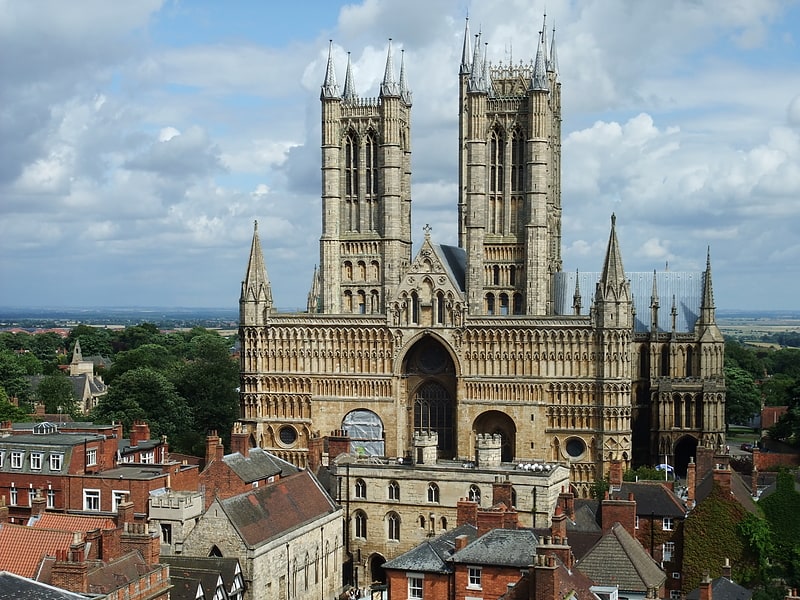
11th-century Gothic place of worship. Lincoln Cathedral, Lincoln Minster, or the Cathedral Church of the Blessed Virgin Mary of Lincoln and sometimes St Mary's Cathedral, in Lincoln, England, is a Grade I listed cathedral and is the seat of the Anglican Bishop of Lincoln. Construction commenced in 1072 and continued in several phases throughout the High Middle Ages. Like many of the medieval cathedrals of England it was built in the Early Gothic style.
Although considered doubtful by some, many historians claim it became the tallest building in the world upon the completion of its 160 metres (520 ft) high central spire in 1311; if so, it was the first building to hold that title after the Great Pyramid of Giza, and held it for 238 years until the spire collapsed in 1548, and was not rebuilt. Had the central spire remained intact, Lincoln Cathedral would have remained the world's tallest structure until the completion of the Washington Monument in 1884. For hundreds of years the cathedral held one of the four remaining copies of the original Magna Carta, now securely displayed in Lincoln Castle. The cathedral is the fourth largest in the UK (in floor area) at around 5,000 square metres (54,000 sq ft), after Liverpool, St Paul's and York Minster. It is highly regarded by architectural scholars; the Victorian writer John Ruskin declared: "I have always held.. that the cathedral of Lincoln is out and out the most precious piece of architecture in the British Isles and roughly speaking worth any two other cathedrals we have."[1]
Address: Minster Yard, LN2 1PY Lincoln
Lincoln Castle
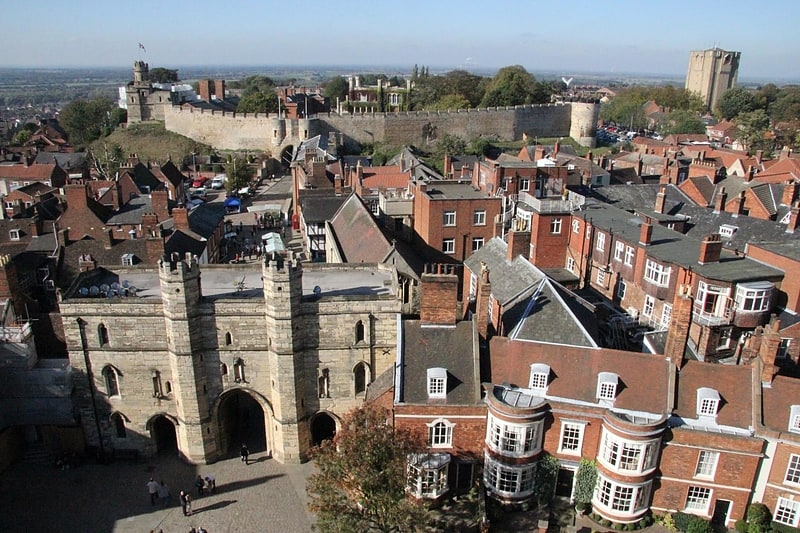
Guided tours of 11th-century fortress. Lincoln Castle is a major Norman castle constructed in Lincoln, England, during the late 11th century by William the Conqueror on the site of a pre-existing Roman fortress. The castle is unusual in that it has two mottes. It is one of only two such castles in the country, the other being at Lewes in East Sussex. Lincoln Castle remained in use as a prison and court into modern times and is one of the better preserved castles in England; the Crown Courts continue to this day. It is open to the public most days of the week and possible to walk around the walls from which there are views of the castle complex, cathedral, the city, and surrounding countryside. The castle is now owned by Lincolnshire County Council and is a scheduled monument.[2]
Address: Castle Hill, LN1 3AA Lincoln
Lincoln Drill Hall
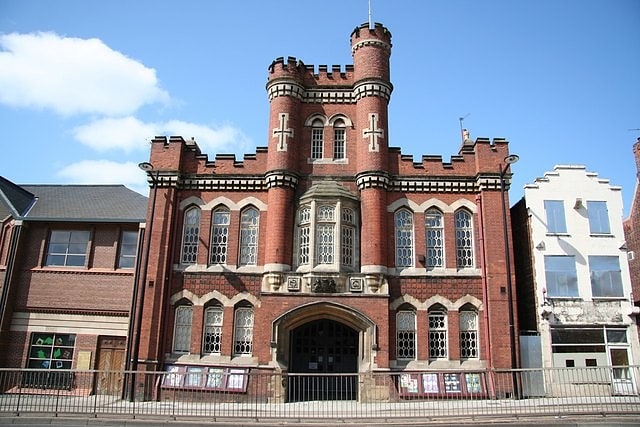
Performing arts theater in Lincoln, England. Lincoln Drill Hall is a former drill hall in Lincoln in England which is now used as a multi-purpose arts centre and theatre.[3]
Address: Freeschool Ln, LN2 1EY Lincoln
Doddington Hall
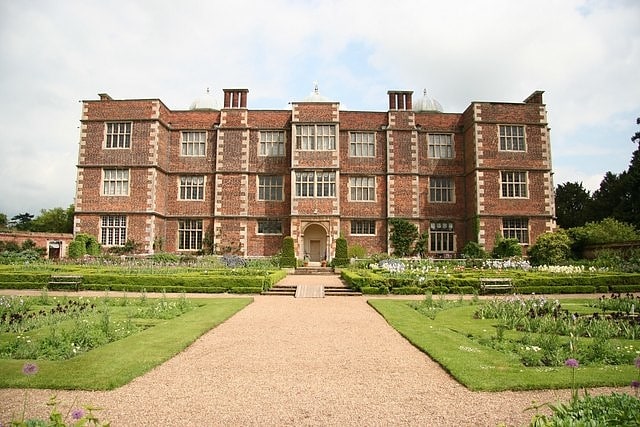
Wedding venue in England. Doddington Hall is, from the outside, an Elizabethan prodigy house or mansion complete with walled courtyards and a gabled gatehouse. Inside it was largely updated in the 1760s. It is located in the village of Doddington, to the west of the city of Lincoln in Lincolnshire, England.[4]
St Swithin's Church

Church in Lincoln, England. St. Swithin's Church, Lincoln is a Grade II* listed parish church located in St Swithin's Square, Lincoln, England.[5]
Empowerment Sculpture
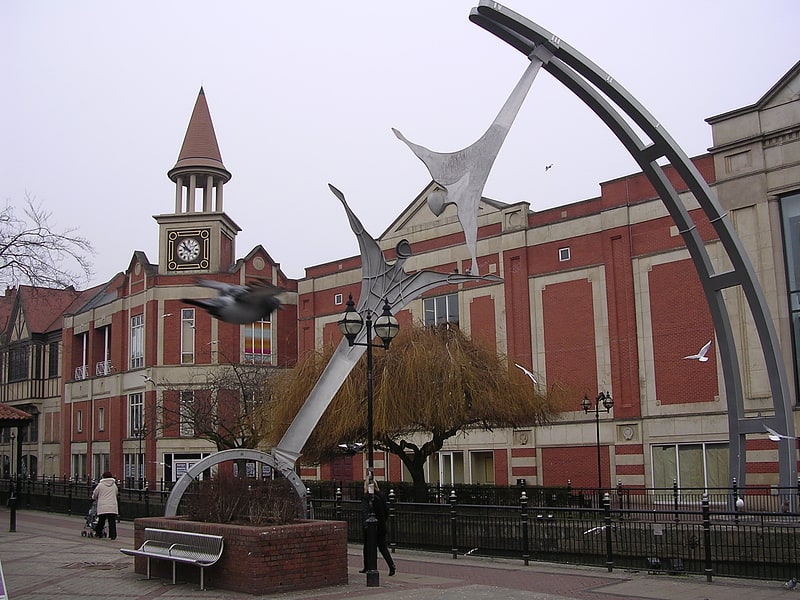
Sculpture. Empowerment is a public sculpture in the centre of the city of Lincoln in England.
Designed by the artist Stephen Broadbent, sponsored by Alstom Power (now Siemens), and completed in 2002, the sculpture spans the River Witham in Lincoln's City Square. It takes the form of two aluminium-and-steel human figures reaching to each other across the water. The design is intended to echo the shape of turbine blades, in recognition of Lincoln's industrial heritage.
At 16 metres tall, Empowerment is the largest sculpture in Lincolnshire. Increasingly, it is used alongside more traditional images of Lincoln — the cathedral and castle — as a recognisable 'tourist emblem' of the city (similar to the adoption of the Angel of the North as a symbol of North East England).[6]
The Collection
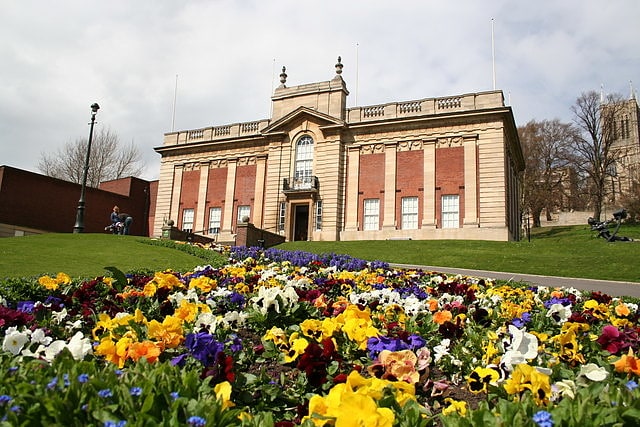
Museum in Lincoln, England. The Collection is the county museum and gallery for Lincolnshire in England. It is an amalgamation of the Usher Gallery and the City and County Museum. The museum part of the enterprise is housed in a new, purpose-built building close by the Usher Gallery in the city of Lincoln.[7]
Address: 1 Danes Terrace, LN2 1LP Lincoln
High Bridge
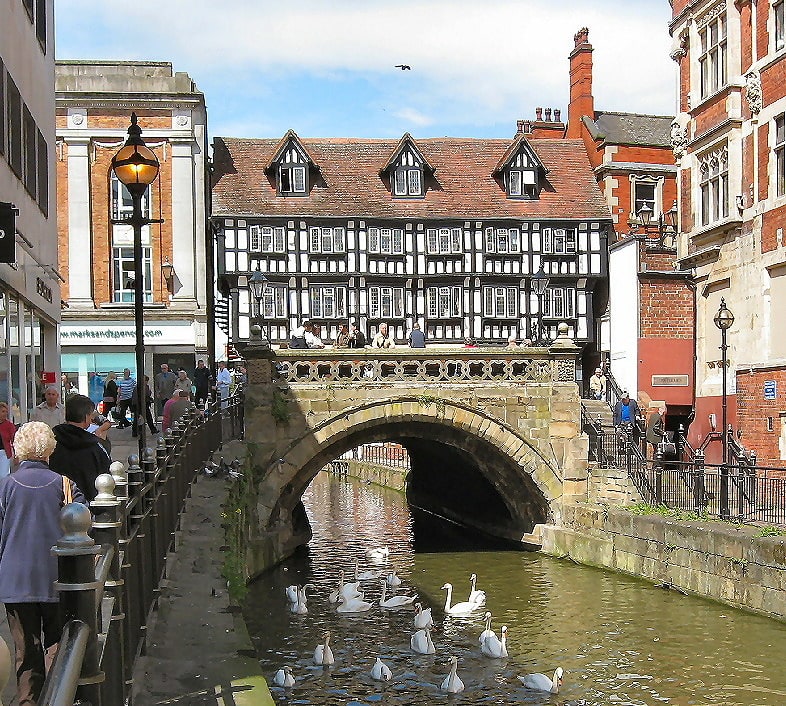
Bridge in Lincoln, England. High Bridge carries the High Street across the River Witham in Lincoln in eastern England. It is the oldest bridge in the United Kingdom which still has buildings on it. The bridge was built about 1160 AD and a bridge chapel was built dedicated to Thomas Becket in 1235 on the east side of the bridge. The chapel was removed in 1762. The current row of timber framed shops on the west side of the bridge date from about 1550. The two upper storeys of the shops are jettied forward and at the corners there are carved figures of angels. The shops were partly dismantled and re-erected in 1901–02 under the supervision of the Lincoln architect William Watkins.
Bridges like this were common in the Middle Ages, the best known being London Bridge, but most have long since been demolished because of their obstruction to the river flow and to shipping.
The Glory Hole is the name given by generations of boaters to the High Bridge in Lincoln. It has a narrow and crooked arch which sets a limit on the size of boats using the Witham and going from Brayford Pool, at the start of Foss Dyke, to Boston and the sea.
Since the 14th century the bridge has contributed to floods in Lincoln and after any heavy rain the bridge is virtually unnavigable, which may be why it got its name. A design by William Jessop in the 19th century to reroute the waters of the Witham through the south of the town was never implemented.
The bridge is both a grade I listed building and a scheduled monument.[8]
Address: High St, LN5 7DR Lincoln
Lincoln Arboretum
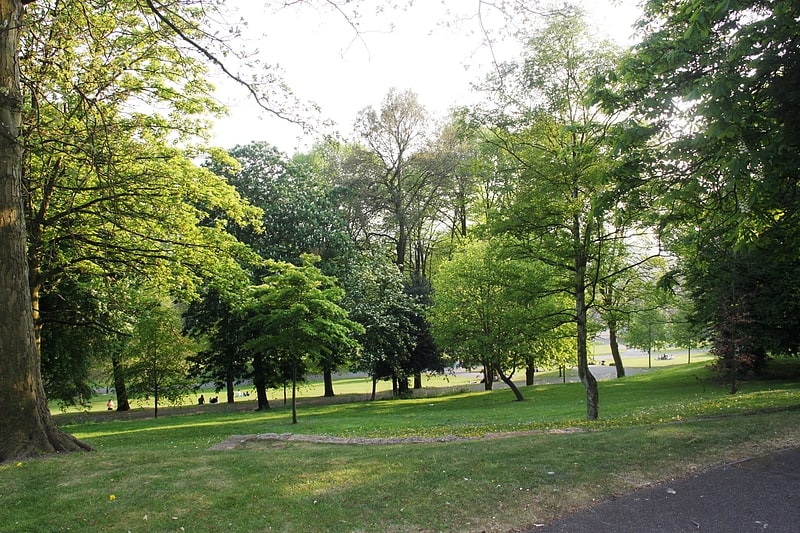
Park in Lincoln, England. The Lincoln Arboretum is an 22 acres park in Lincoln, Lincolnshire, England. The park has two ponds and varied tree cover, and was designed and laid out between 1870 and 1872 by the celebrated Victorian gardener Edward Milner. The arboretum is a park of grade II importance.[9]
Address: Monks Road, Lincoln
Newport Arch
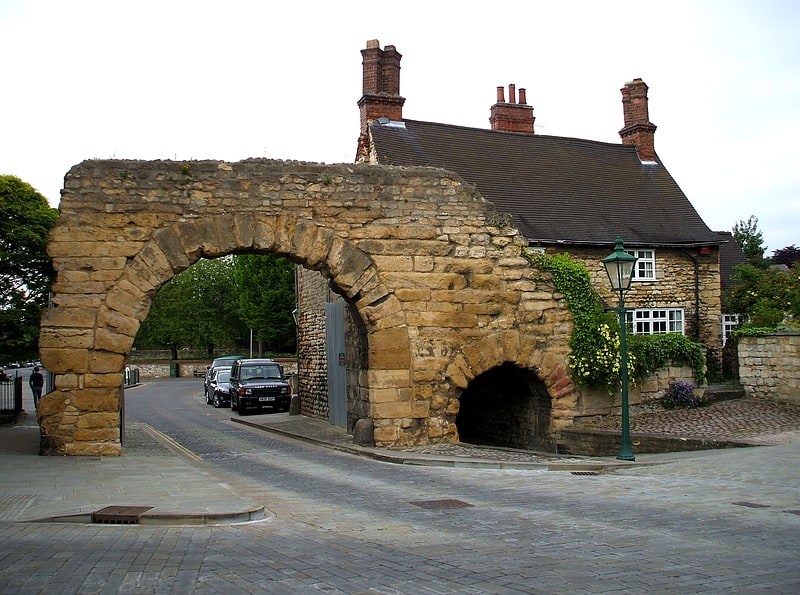
Newport Arch is a 3rd-century Roman gate in the city of Lincoln, Lincolnshire. It is a Scheduled monument and Grade I listed building and is reputedly the oldest arch in the United Kingdom still used by traffic.[10]
Address: 50 Bailgate, LN1 3AP Lincoln
Brayford Pool

Lake in England. The Brayford Pool is a natural lake formed from a widening of the River Witham in the centre of the city of Lincoln in England. It was used as a port by the Romans – who connected it to the River Trent by constructing the Foss Dyke – and has a long industrial heritage.
Today, the waterfront surrounding the pool is home to a range of hotels, restaurants, bars, entertainment venues and a modern University (the University of Lincoln). There is also a year-long programme of events on the waterfront including vehicle displays, music evenings and carnival parades.[11]
Address: Brayford Wharf, Lincoln
Theatre Royal
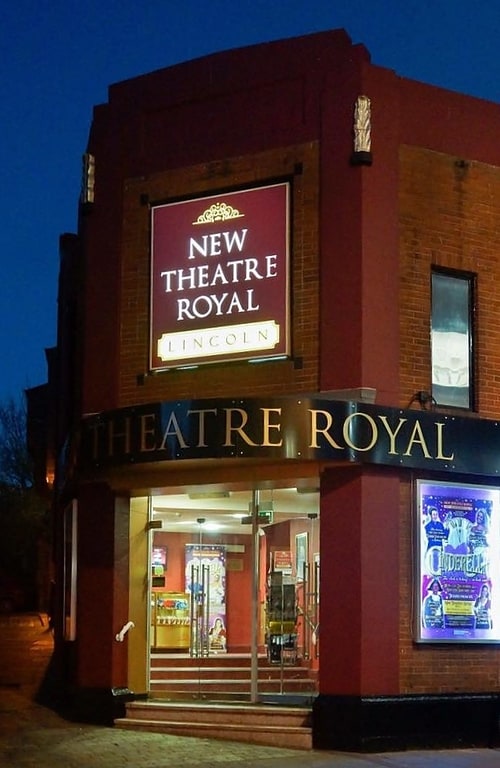
Theatre in Lincoln, England. The New Theatre Royal Lincoln is a theatre in Lincoln, Lincolnshire, England.
The present theatre, initially called the New Theatre Royal, was built in 1893 to the designs of Bertie Crewe and W.G.R. Sprague. After an explosion and fire in 1892 had destroyed the previous Theatre Royal on the site, built in 1806. The 1806 theatre was, in turn, a rebuild of an earlier theatre of 1764 on Butchery Street, now called Clasketgate. The structure of the building remained the same until 1907, when the present frontage, foyer, and lounge were added, spinning the orientation of the entrance to face Clasketgate. A 2010 refurbishment of public non-auditorium space restructured and modernised the foyer and bar areas. The building is Grade II listed.
The New Theatre Royal Lincoln was renamed to the Theatre Royal Lincoln and then later changed back the New Theatre Royal Lincoln in 2016 when the theatre was taken over and refurbished after the previous management folded.
From 1893 to 1954 the theatre was run by a succession of leaseholders and managers presenting popular plays, musicals, music hall stars and film. In 1954 it became a weekly repertory theatre under the Lincoln Theatre Association until bankruptcy in 1976, after which it was taken over by Paul Elliot Entertainments in association with Chris Moreno. Under Elliot it became a producing house for its own shows, and a design and production facility for various UK theatre pantomimes, national tours and cruise-ship shows, and a continuing venue for amateur dramatic companies. Chris Moreno became sole manager and lessee in 1993.
In 2009 the local authority, Lincoln City Council, withdrew its ongoing subsidy which led to a threat of closure, and to scrutiny of how council funding had been used. Bids from amateur dramatic, church and community groups, and local entertainment businesses to take-over the theatre's lease were unsuccessful. The theatre survived and was taken over by ID Productions, using it as a base for its touring shows. Theatre Royal's professional theatre offer is now largely as a receiving house for UK theatre tours and musical acts.
During the Second World War, The Theatre Royal was popular with RAF personnel within the county, particularly Guy Gibson.
Sir Patrick Stewart’s debut as a professional actor, as Morgan in Treasure Island, was at the Theatre Royal.
During September 2002, author and former politician Jeffrey Archer, while serving part of his gaol sentence at North Sea Camp prison, worked backstage at the theatre.
In November and December 2003, Theatre of Dreams, a series of four fly-on-the-wall documentaries built around profiles of four employees at the Theatre Royal, was aired on BBC2.
In 2009, reality TV personality Jade Goody played the 'Wicked Witch' in Snow White and the Seven Dwarfs, but had to pull out through illness.
On 18 March 2011, Lord Chancellor Kenneth Clarke visited the theatre as part of the campaign in the May 2011 referendum on the Alternative Vote (AV) system in UK parliamentary elections.[12]
Address: Lincoln, Clasketgate
Museum of Lincolnshire Life
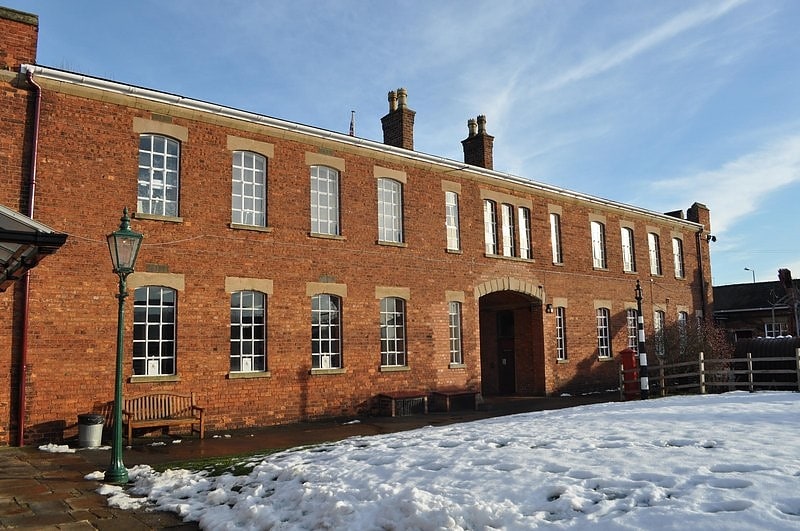
Museum in Lincoln, England. The Museum of Lincolnshire Life is a museum in Lincoln, Lincolnshire, in the UK. The museum collection is a varied social history that reflects and celebrates the culture of the county of Lincolnshire and its people from 1750 to the present day. Exhibits illustrate commercial, domestic, agricultural, industrial and community life. The story of the Royal Lincolnshire Regiment and Lincolnshire Yeomanry is explained and illustrated by a variety of methods.[13]
Address: Old Barracks, LN1 3LY Lincoln
Hartsholme Country Park
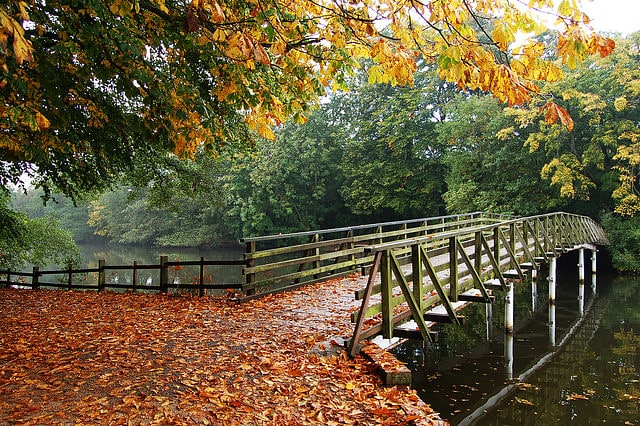
Country park in Lincoln, England. Hartsholme Country Park lies about 3 miles southwest of the city centre of Lincoln in the East Midlands of England. Access is from the Skellingthorpe Road.
Hartsholme Country Park covers more than 200 acres (80 ha) and was designated in 1974 and opened in 1979. It contains a camping area for tents, caravans and motor caravans. It is Grade II listed.
The Park centres on lakes and ornamental grounds originally the work of Edward Milnerin 1862, landscaping the area around a reservoir of 1848. They were built along with a home, Hartsholme Hall, which was demolished in 1951, around the time the grounds became a public park.
In July 2012 the White Bridge was closed, and the deck removed in September, for safety reasons. This was a footbridge built in 1962, on the pylons of the earlier 1902 bridge. Closure interrupts a public right-of-way across the lake. A replacement bridge using the original 1902 supports reopened on 7 March 2014.
Hartsholme Park has often been awarded a Green Flag Award, including in 2011 and 2013. These are awarded annually by the charity Keep Britain Tidy.
The park opened to the public in 1978[14]
St Peter at Gowts
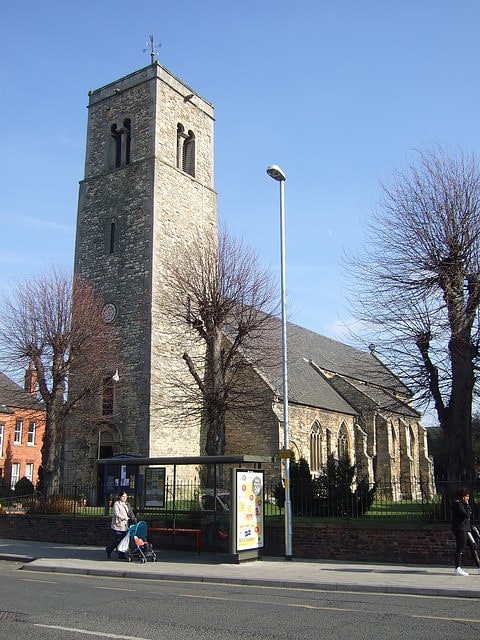
St Peter at Gowts is a Grade I listed parish church in Lincoln, England.[15]
Boultham Park
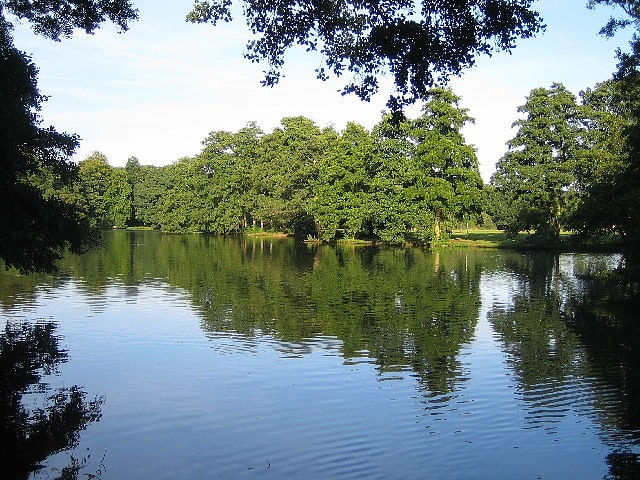
Park in Lincoln, England. Boultham Park is a public park in Lincoln, Lincolnshire, England. Originally the park for the Boultham Hall, it was purchased in 1929 by the City of Lincoln Council, and opened as a public park for the people of Lincoln. The house was demolished in 1959. The park is Grade II listed.[16]
Address: Rookery Ln., LN 5 8 Lincoln
Lincoln Medieval Bishop's Palace
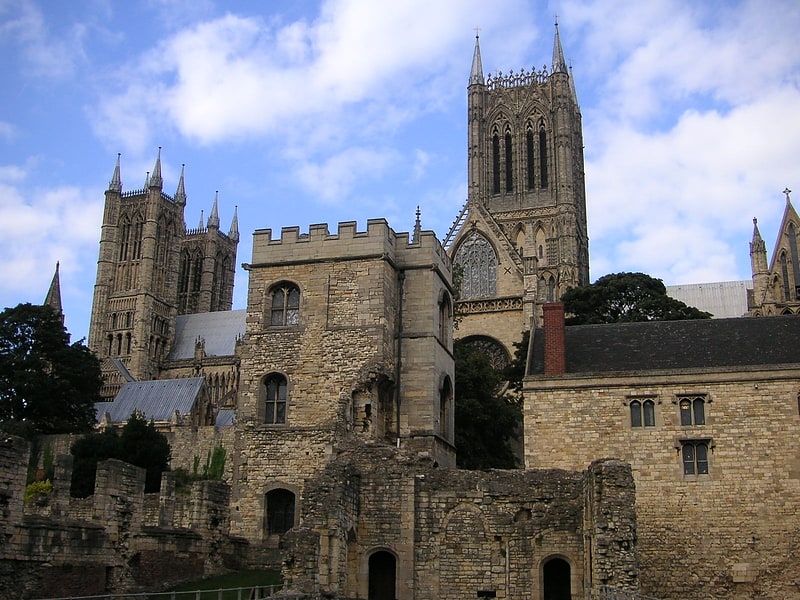
Heritage building in Lincoln, England. The Old Bishop's Palace is a historic visitor attraction in the city of Lincoln, Lincolnshire. When it was first built, in the late 12th century, it was at the centre of the vast Diocese of Lincoln, which stretched from the Humber to the Thames. The Palace was one of the most impressive buildings of medieval England, reflecting the power and wealth of Lincoln's bishops. It is situated on a spectacular hillside site, just below Lincoln Cathedral, providing extensive views over the city. The site lies immediately to the south of the Roman wall which had become the medieval defensive wall of the Bail, which enclosed both Lincoln Castle and Lincoln Cathedral. The palace was damaged during the Civil War and subsequently largely abandoned. During the period that followed the Bishop's main residence was Buckden Palace in Huntingdonshire. In 1841, following the reduction in size of the Diocese of Lincoln, the Bishop moved to Riseholme, to the north of Lincoln. This proved inconvenient and Riseholme Hall was sold. In 1886 an older building on the western side of the Palace enclosure was substantially rebuilt and enlarged in a Tudor revival style by the architect Ewan Christian. A further change occurred in 1888 when the architects Bodley and Garner rebuilt and converted the southern portion of the medieval Great Hall into a chapel for the Bishop.
In 1945 it was decided that this Palace was too large and in 1948 the Bishop's residence was moved to Atherstone Place on the north side of the cathedral. The Victorian Bishop's palace subsequently became a Diocesan Retreat centre and since 2009 has been run as the Old Palace Hotel. The ruined parts of the Medieval Palace were placed in the guardianship of the Ministry of Works in 1954, and are now managed by English Heritage. A programme of restoration, excavation and interpretation has been carried out. A modern garden plan was laid out by Mark Anthony Walker, in 2001, and a vineyard re-established in 2012.[17]
Address: Minster Yard, LN2 1PU Lincoln
Lincoln Christmas Market
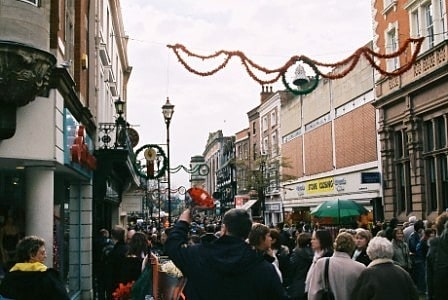
Christmas market in Lincoln, England. Lincoln Christmas Market, held in Lincoln, England, is one of the largest Christmas markets in Europe, attracting over 250,000 people over the four-day event.
Held around three weeks before Christmas, the market spreads around the historic centre of Lincoln including the castle and cathedral. As well as stalls selling goods there is a funfair with Ferris wheel, open air classical music and rock concerts and traditional events such as beer barrel rolling.
The number of visitors is so great that a circular one-way system for pedestrians around the streets of Lincoln is put into place. The route includes travelling through the grounds of Lincoln Castle.[18]
Lindum Colonia
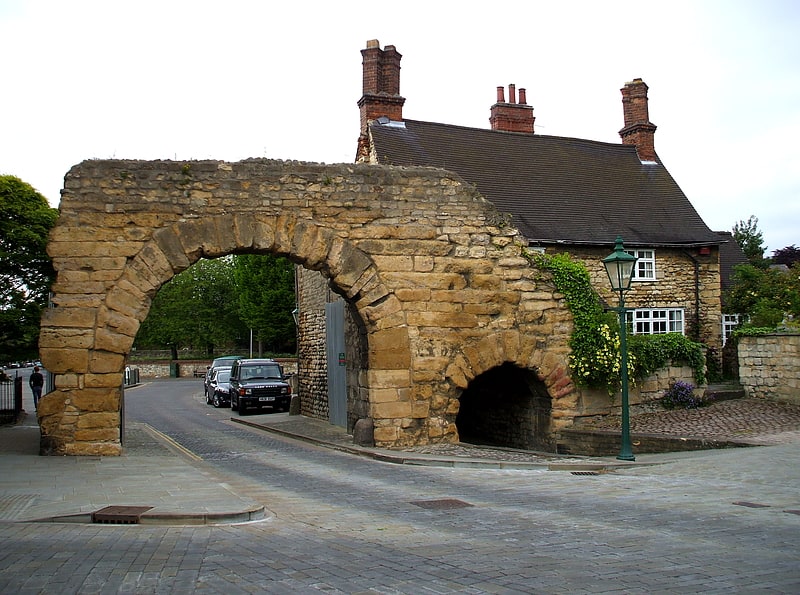
City. Lindum Colonia was the Latin name for the settlement which is now the City of Lincoln in Lincolnshire. It was founded as a Roman Legionary Fortress during the reign of the Emperor Nero or possibly later. Evidence from Roman tombstones suggests that Lincoln was first garrisoned by the Ninth Legion Hispana, which probably moved from Lincoln to found the fortress at York around c. 71 AD. Lindum was then garrisoned by the Second Legion Adiutrix, which then went on to Chester in 77–78 AD.
Probably under the reign of Domitian and most likely after 86 AD, the fortress became a colonia, a settlement for retired soldiers sanctioned by the Emperor. The colonia now developed and a second enclosure, often referred to as the Lower Colonia was added between the Upper Colonia and the River Witham. Evidence has been uncovered for the Forum, baths, temples, buildings and shops of the colonia which was enclosed by walls. The walls of the Upper Colonia started to be built in the earlier part of the 2nd century, while the Lower Colonia was walled in either the late 2nd or early 3rd centuries. The Roman settlement also spread to the south of the river Witham in the area known as the Wigford. In the early 3rd century with the re-organisation of the Roman Empire, a case can be made that Lindum Colonia had become the provincial capital of Britannia Secunda and possibly a Bishop from Lincoln was present at the Council of Arles in 314 AD. In the 4th century Lincoln continued to develop and there is increasing evidence for Christianity. After the departure of the Romans in the 5th century Lindum declined in size and population, although archaeological evidence suggests some degree of continuity.[19]
St Hugh's Church
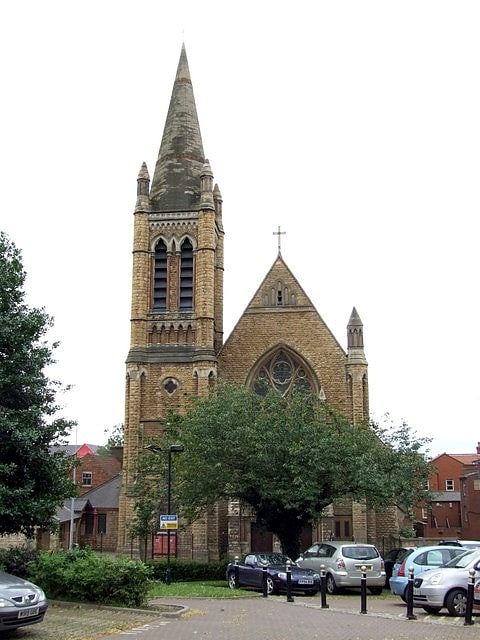
Parish church in Lincoln, England. St Hugh's Church or St Hugh of Lincoln Church is a Roman Catholic Parish church in Lincoln, England. It was built from 1892 to 1893. It is situated on the corner of Monks Road and Friars Lane in the town centre. It was designed by Albert Vicars and is a Grade II listed building.[20]
Address: 43 Friars Ln, LN2 5AL Lincoln